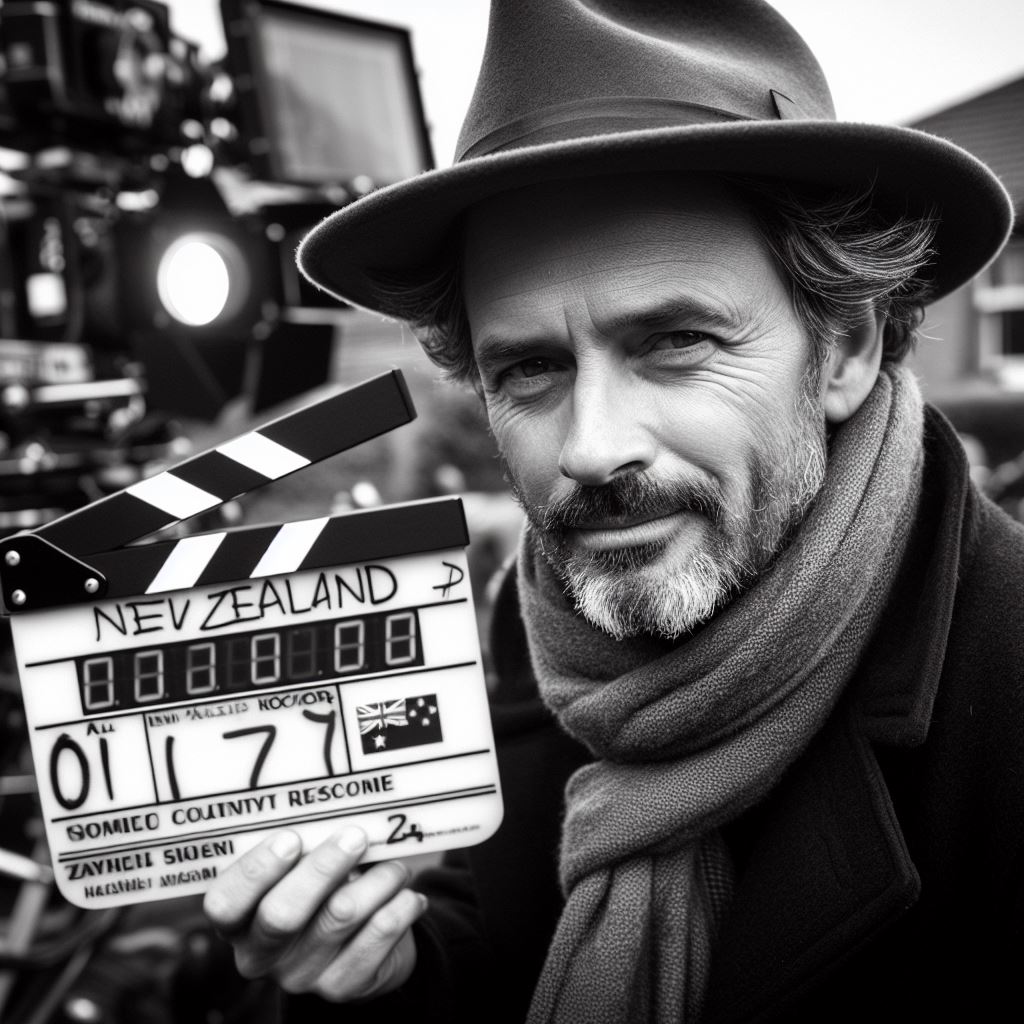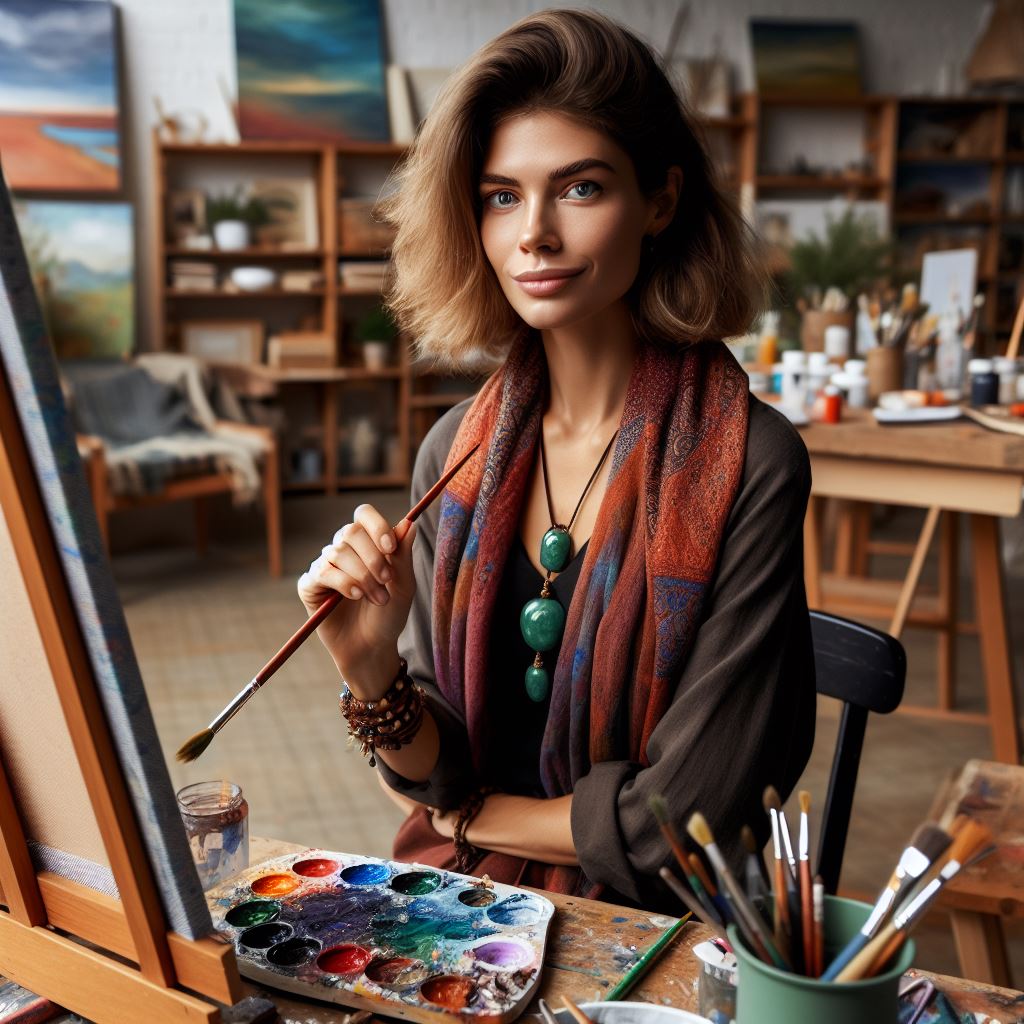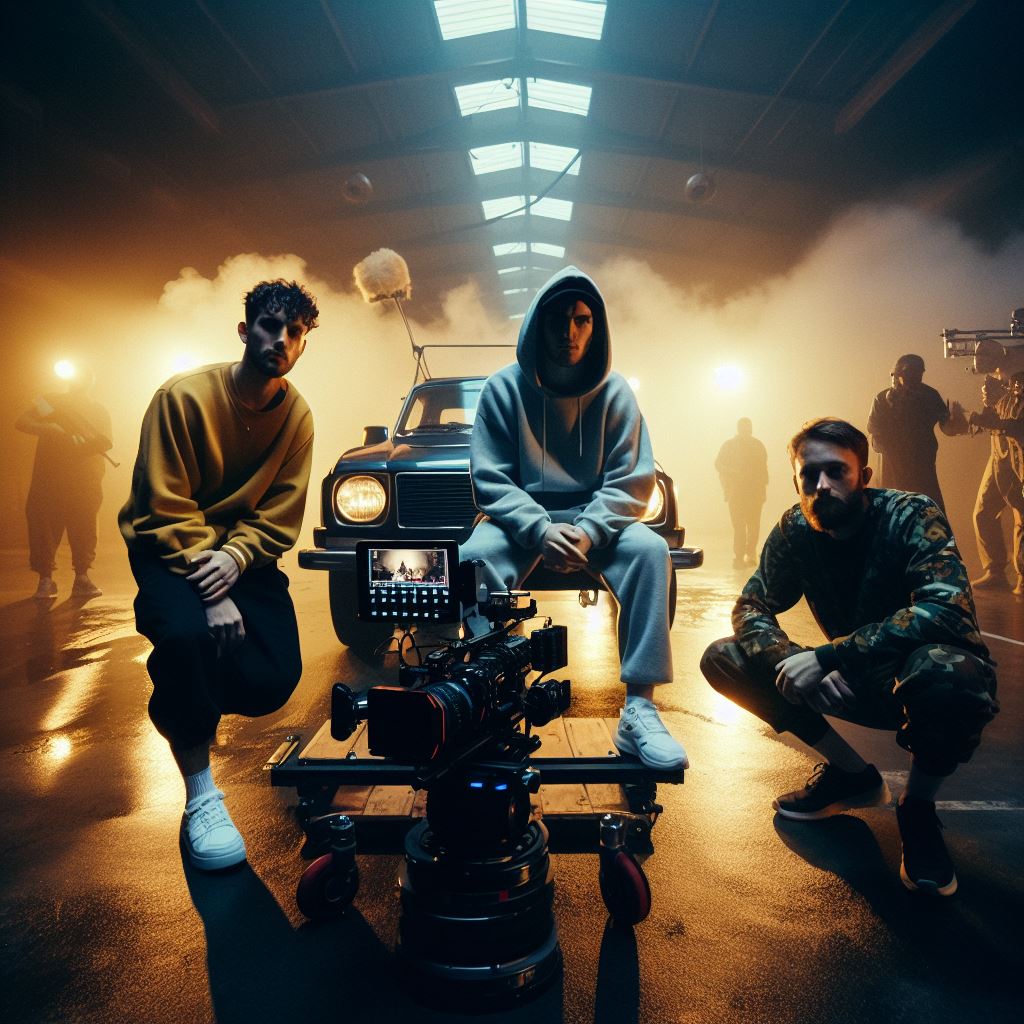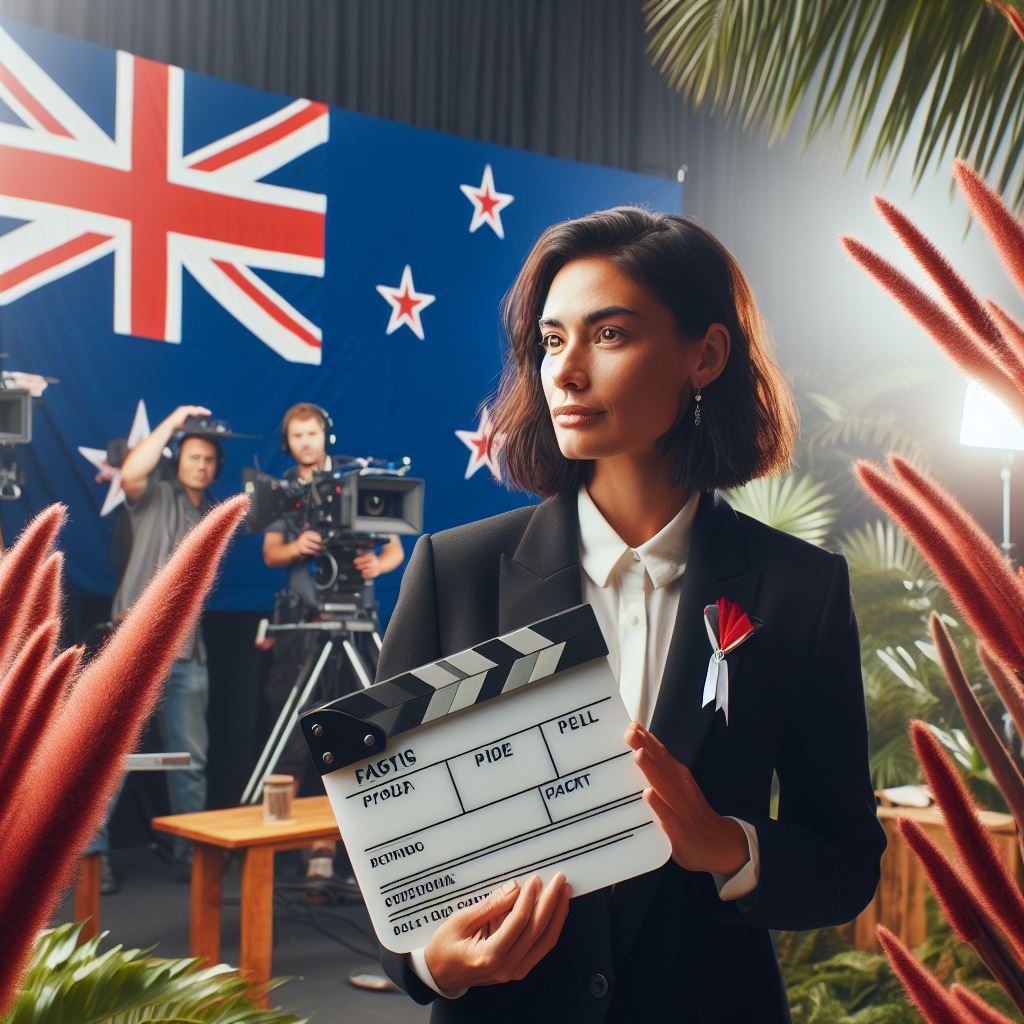Introduction
Art directors play a crucial role in New Zealand’s media scene, shaping the visual aesthetics and storytelling.
They hold significant influence by directing the artistic elements such as set designs, costumes, and overall visual direction in various media platforms.
Their expertise ensures that the visuals effectively communicate the intended message and capture the audience’s attention.
Art directors have the power to create immersive experiences by combining their artistic vision with technical skills.
They collaborate closely with directors, designers, and production teams to bring ideas to life and manifest the desired atmosphere and tone.
The impact of art directors in the media industry cannot be underestimated, as they shape the overall look and feel of films, television shows, advertisements, and other creative projects.
Their ability to translate concepts into visually striking imagery ensures that the visual storytelling aligns with the intended message.
By understanding the target audience and market trends, art directors enhance engagement and build strong brand identities.
In the dynamic and competitive media landscape of New Zealand, art directors are the cornerstone of successful campaigns and productions.
Their creative expertise and attention to detail have a profound impact on how stories are told and ultimately experienced by audiences.
As we delve into the topic, we will explore the nuances and responsibilities that come with being an art director in New Zealand’s media industry.
What is an Art Director?
An art director is a creative professional who is responsible for the visual style and design of various artistic projects, including advertisements, magazines, films, and websites.
They play a crucial role in bringing a creative vision to life and ensuring that it aligns with the intended message and objectives of the project.
Role and Responsibilities of an Art Director in General
- Developing and managing the overall visual concept and design of a project.
- Collaborating with clients, creative teams, and other stakeholders to understand the project’s goals and requirements.
- Creating and presenting design ideas, storyboards, and mock-ups to communicate the visual concept effectively.
- Overseeing and guiding the work of designers, photographers, illustrators, and other creative team members.
- Ensuring that the project’s visual elements are cohesive and consistent throughout.
- Staying updated with current design trends and techniques to bring fresh ideas to projects.
- Managing budgets, timelines, and resources effectively to meet project milestones.
- Collaborating with production teams to ensure the successful execution of the visual concept.
- Reviewing and approving designs, layouts, and final artwork before production or publication.
Responsibilities of an Art Director in the Media Industry in NZ
In the dynamic media industry in NZ, art directors play a critical role in creating visually engaging content that captures and holds the audience’s attention.
Art directors in the media industry in NZ are responsible for
- Developing creative concepts and designs for advertisements, television shows, films, and online content.
- Collaborating with writers, directors, and producers to translate concepts into visually appealing and effective campaigns.
- Ensuring that the visual design aligns with the brand identity and target audience of the media production.
- Providing guidance and feedback to designers, photographers, and other creative professionals involved in the project.
- Staying abreast of the latest industry trends, technologies, and best practices to deliver innovative and cutting-edge designs.
- Managing multiple projects simultaneously and adhering to tight deadlines in a fast-paced and highly competitive industry.
Skills and Qualifications Required for the Role
To excel as an art director in NZ’s media industry, the following skills and qualifications are typically required:
- A strong portfolio showcasing a diverse range of design projects demonstrating creativity, technical skills, and a keen eye for detail.
- Excellent visual communication and storytelling abilities to convey ideas effectively.
- Proficiency in design software and tools such as Adobe Creative Suite.
- Strong leadership and teamwork skills to collaborate effectively with cross-functional teams.
- Exceptional project management and organizational skills to handle multiple tasks and meet deadlines.
- A solid understanding of branding, typography, color theory, and composition principles.
- An in-depth knowledge of the media industry, including current trends and emerging technologies.
- A degree or diploma in graphic design, visual communications, or a related field is often preferred.
In essence, art directors play a crucial role in the media industry in NZ, contributing their creative vision, design expertise, and leadership skills to produce visually compelling content that resonates with audiences.
To succeed in this role, individuals must possess a combination of technical proficiency, artistic talent, and a deep understanding of the media landscape.
Read: NZ Bands Making Global Waves
The Evolution of Art Direction in NZ
In order to understand the role of art directors in NZ’s media scene, it is important to delve into the historical background of art direction in the country.
Over the years, art direction has undergone significant changes and developments, shaping the way media is presented to the audience.
Historical Background of Art Direction in NZ’s Media Scene
- Early Beginnings: The concept of art direction in NZ’s media scene can be traced back to the early days of print media.
- Introduction of Photography: With the advent of photography, art direction expanded further, integrating visual elements into media.
- Emergence of Film Industry: The growing film industry in NZ led to the increased demand for art directors to visually enhance cinematic experiences.
- Television Era: As television became popular in NZ, art direction took on a new dimension with the creation of sets and visuals for television programs.
Evolution of Art Direction over the Years
- Technological Advancements: The proliferation of digital technology revolutionized art direction in NZ’s media scene.
- Transition to Digital Media: Art direction moved from traditional mediums to digital platforms, requiring new sets of skills and techniques.
- Interactive Experiences: With the rise of interactive media, art directors began incorporating user experience design into their role.
- Integration of Graphics and Animation: Art directors started utilizing graphics and animation to enhance storytelling in various media forms.
Significant Changes and Developments in the Role of Art Directors
The role of art directors in NZ’s media scene has evolved significantly over the years, adapting to the changing landscape of media consumption and technological advancements.
- Broader Scope: Art directors now have a broader scope, playing a crucial role in shaping the overall visual identity of media projects.
- Collaborative Approach: Art directors now work closely with other creative professionals, such as graphic designers and animators, to achieve cohesive visual solutions.
- User-Centric Design: Art directors prioritize user experience design, ensuring that the audience’s needs and expectations are met.
- Adaptability: Art directors have become more adaptable, constantly learning and evolving their skills to keep up with changing trends and technologies.
- Emphasis on Branding: Art directors play a vital role in maintaining the visual consistency and brand identity of media projects.
Overall, the evolution of art direction in NZ’s media scene reflects the dynamic nature of the industry.
From its early beginnings in print media to the modern digital era, art direction has grown and adapted to meet the demands of a constantly evolving audience and technological landscape.
Read: Maori Music: NZ’s Rich Heritage
The Contribution of Art Directors in NZ’s Media Scene
Art directors play a significant role in shaping the overall aesthetic and visual appeal of media in New Zealand.
Through their creative vision and expertise, they enhance the storytelling and narrative aspects of various forms of media, leaving a lasting impact on audiences.
This blog section will examine the impact art directors have on the overall aesthetic and visual appeal of media.
Discuss how they contribute to storytelling and narrative through visuals, and highlight examples of successful campaigns or projects where art directors played a crucial role.
Visual Aesthetics and Appeal
Art directors are instrumental in creating visually stunning and captivating media.
Their keen eye for detail and design principles allows them to carefully choose colors, typography, layouts, and imagery that align with the desired aesthetic and appeal to the target audience.
Whether it’s a magazine spread, a website design, or a movie poster, art directors ensure that every visual element is cohesive and visually appealing.
Enhancing Storytelling
Art directors contribute to storytelling by using visuals to evoke emotions, establish themes, and convey messages.
They understand the power of visual storytelling and work closely with writers, directors, and designers to bring stories to life visually.
Whether it’s through set designs, costume choices, or the manipulation of lighting and color, art directors enhance the narrative by creating immersive visual experiences.
Creating Brand Identity
Art directors are essential in building and maintaining a brand’s visual identity across various media platforms.
They establish a consistent look and feel that becomes instantly recognizable and associated with a particular brand.
By utilizing elements such as logos, colors, and typography, art directors create a cohesive visual language that communicates the brand’s values and personality effectively.
Collaboration and Leadership
Art directors play a crucial role in coordinating and leading a team of creatives, including designers, photographers, and illustrators.
They are adept at communicating their artistic vision and guiding others to ensure that it is implemented cohesively.
This collaborative approach allows for the exchange of ideas, resulting in richer and more innovative media productions.
Personalized Career Consulting
Unlock your potential with expert career advice tailored to your goals. Get personalized guidance and actionable steps toward your dream career in New Zealand.
Get StartedIntegration of Technology
With the rapid advancements in technology, art directors play a vital role in incorporating new digital tools and techniques into their work.
They explore innovative ways to blend traditional and digital mediums to create visually striking and engaging media.
Whether it’s through the use of CGI in films or interactive elements in web design, art directors embrace and harness technology to push creative boundaries.
Examples of Success
Numerous successful campaigns and projects in New Zealand’s media scene owe their achievements to the creative genius of art directors.
From award-winning advertisements to visually stunning films, these professionals have left an indelible mark on the industry.
An example that stands out is the “Pure New Zealand” tourism campaign, where art directors beautifully captured the country’s natural beauty, enticing tourists with breathtaking visuals.
In review, art directors in New Zealand’s media scene play a vital role in shaping the overall aesthetic and visual appeal of various forms of media.
Their contribution goes beyond aesthetics, as they enhance storytelling and narrative through visuals, create brand identity, foster collaboration, embrace technology, and leave a lasting impact on successful campaigns and projects.
The work of art directors is a testament to the power of visual communication in captivating and engaging audiences.
Read: NZ Music Festivals: Behind Scenes

Collaboration with Other Professionals
Collaboration plays a crucial role in the success of art directors within New Zealand’s media scene.
By working together with other professionals in the industry, art directors can enhance their creative vision and produce exceptional results.
Importance of Collaboration
Collaboration between art directors and other professionals is vital in the media industry.
Through teamwork and exchange of ideas, a collective vision is formed, resulting in a more comprehensive and impactful final product.
When art directors collaborate with photographers, the combination of their skills can create visually captivating content.
The art director’s conceptual ideas and the photographer’s expertise in capturing the perfect shot merge together to bring concepts to life.
In addition, collaborating with graphic designers can transform concepts into visually stunning designs.
The art director’s vision is enhanced by the graphic designer’s skills in layout, typography, and color selection, resulting in aesthetically pleasing and impactful visuals.
Stylists also play a crucial role in collaboration with art directors. Their expertise in selecting the right clothing, props, and accessories adds depth and character to the overall artistic direction.
Together, they create visually captivating and cohesive images that resonate with the target audience.
Relationships Art Directors Build
Art directors build strong relationships with photographers, graphic designers, stylists, and other professionals in the industry.
These relationships are based on trust, mutual respect, and open communication.
With photographers, art directors establish a symbiotic relationship. They work hand in hand, providing guidance and feedback throughout the creative process.
This collaboration ensures that the photographic direction aligns with the overall artistic vision.
Similarly, with graphic designers, art directors establish a collaborative partnership.
They share ideas, exchange feedback, and work closely to ensure that the designs effectively reflect the brand’s message and aesthetic. This collaboration results in visually appealing and cohesive designs.
Art directors also work closely with stylists, developing a relationship based on understanding the desired concept and translating it into visual elements.
Through open communication, they ensure that the styling choices align with the overall creative direction, resulting in a harmonious final product.
Examples of Successful Collaborations
Several examples highlight the power of collaboration between art directors and other professionals:
Transform Your Career with a Professional CV and Cover Letter
Stand out to employers with an ATS-optimized resume and tailored cover letter designed to match your dream role. Let us craft your job application materials for success!
Get Started- A fashion magazine collaboration between an art director, a photographer, and a stylist resulted in a stunning editorial spread. The art director’s vision, the photographer’s expertise, and the stylist’s choice of outfits harmonized to create visually captivating images that resonated with the audience.
- An advertising campaign collaboration between an art director and a graphic designer led to a visually striking visual identity. The art director’s concept and the graphic designer’s skills in layout and typography culminated in a cohesive design that effectively communicated the brand’s message.
- A film production collaboration between an art director, a set designer, and a cinematographer resulted in visually immersive scenes. The art director’s vision, combined with the set designer’s expertise in constructing atmospheric environments, and the cinematographer’s techniques, brought the story to life on the screen.
These successful collaborations demonstrate the power of teamwork and the importance of synergy among professionals in the media industry.
In short, collaboration is an indispensable element in the career of art directors within New Zealand’s media scene.
By working together with photographers, graphic designers, stylists, and other professionals, art directors can elevate their creative vision and produce exceptional results.
Through these collaborative efforts, visually captivating and impactful content is created, resonating with the target audience and leaving a lasting impression.
Read: Women in NZ Music: Rising Stars
Challenges Faced by Art Directors in NZ
Art directors in NZ encounter various challenges that affect their roles in the media scene. These challenges include:
- Limited resources and budgets
- Tight deadlines and time constraints
- Adapting to technological advancements
- Keeping up with evolving trends in design and media
- Managing client expectations and demands
Industry-specific hurdles or limitations that impact art direction
- Lack of diversity and representation in the art department
- Inadequate support and recognition from management
- Difficulty in striking a balance between creativity and commercial viability
Potential solutions or strategies to overcome these challenges
- Seeking alternative funding sources or collaborations to expand resources
- Implementing effective project management tools and techniques to streamline workflow
- Continuous professional development to stay updated with new technologies and design trends
- Establishing clear communication channels with clients and managing expectations from the beginning
- Advocating for diversity and inclusivity within the art department and the industry as a whole
- Building strong relationships with management and demonstrating the value of art direction
- Encouraging experimentation and creative risk-taking while considering commercial goals
By adopting these strategies, art directors can navigate the challenges in the NZ media scene and thrive in their roles.
It is essential for art directors to stay adaptable, resourceful, and constantly seek improvement as the media landscape continues to evolve.
The Future of Art Direction in NZ
Art direction plays a crucial role in shaping the media scene of New Zealand. As the industry continues to evolve, it is important to analyze current trends and innovations in art direction.
Additionally, advancements in technology have the potential to greatly impact the role of art directors.
This section will discuss these factors and predict the future direction and potential opportunities for art directors in NZ’s media scene.
Current Trends and Innovations in Art Direction
- Collaboration: Art directors now collaborate more closely with other professionals, such as photographers, designers, and developers.
- Minimalism: There is a growing trend towards minimalistic designs, with clean, simple, and focused visuals.
- Interactive Elements: Art directors are incorporating interactive elements to enhance user experience and engagement.
- Storytelling: The importance of storytelling in art direction is increasing, as it allows brands to create meaningful connections with audiences.
- Experimental Techniques: Art directors are exploring new techniques, such as mixed media, augmented reality, and virtual reality.
How Advancements in Technology May Impact the Role of Art Directors
- Automation: Advancements in technology may automate certain tasks, allowing art directors to focus on more creative aspects.
- Virtual Collaboration: With remote work becoming more prevalent, art directors can collaborate globally, expanding their creative network.
- Data-driven Decision Making: Technology enables art directors to access and analyze data, leading to more informed design decisions.
- Adapting to New Mediums: Art directors need to stay updated with emerging technologies to adapt their skills to new mediums like VR and AR.
- Personalization: Technological advancements allow art directors to create personalized and tailored visual experiences for individual users.
Future Direction and Potential Opportunities for Art Directors in NZ’s Media Scene
- Integration of AI: Art directors may work alongside AI systems, leveraging their capabilities to enhance creativity and efficiency.
- Expanded Scope: With the rise of digital media, art directors will have more opportunities to work across various platforms.
- Emphasis on User Experience: Art directors will play a pivotal role in creating seamless and immersive user experiences.
- Environmental Sustainability: Art directors will have increased responsibility in creating eco-conscious designs that promote sustainability.
- Cross-disciplinary Collaboration: Art directors will collaborate with professionals from diverse fields, such as data analysts and psychologists, to create impactful designs.
Essentially, the future of art direction in NZ’s media scene looks promising yet challenging.
With the evolving trends and advancements in technology, art directors will need to continuously broaden their skill set and embrace new mediums.
Moreover, they will play a pivotal role in shaping user experiences and promoting sustainable and socially conscious designs.
By staying agile and adaptive, art directors in NZ can seize the potential opportunities that lie ahead.
Conclusion
- Throughout this blog post, we have explored the crucial role of art directors in NZ’s media scene.
- Art directors play a pivotal role in creating visually captivating and engaging content.
- They bring a unique vision and creative perspective to the media industry, ensuring high-quality productions.
- The contributions of art directors extend beyond aesthetics; they also help convey powerful messages and emotions.
- Art directors collaborate with various professionals, including photographers, designers, and stylists, to bring their vision to life.
- Their expertise and attention to detail result in visually stunning advertisements, films, and digital media.
- Without art directors, the media landscape would lack innovation, originality, and visual appeal.
- We should appreciate and support art direction in media to foster creativity and elevate the industry.
- By recognizing the efforts and talents of art directors, we can encourage the growth of the media scene in NZ.
- Let us continue to celebrate and value the contributions of art directors in shaping our media landscape.
- Whether you’re a viewer, consumer, or aspiring artist, embrace and support the work of art directors in NZ’s media industry.




